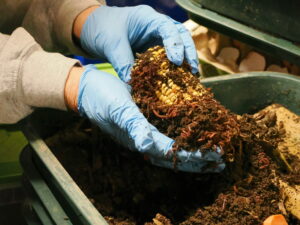Hi and welcome back to MaryBird’s Garden. This is an Occasion because we have had a lovely visit with two super cute members of our family and together we celebrated the 10th blog post milestone!
Let me tell you a bit about Jen and Nick. They are our son and daughter-in-law making up a charming and informed resource around garden-to-table libations paired with culinary delicacies. Jen is a certified sommelier. She brings her knowledge of all the nuances involved in winemaking into the world of libations with great skill and enthusiasm which we are discussing in this post.
Nick is an educated and experienced chef with over 13 years in culinary arts. He thinks through each detail of the ingredients, the weather, the activities planned for after your meal in creating a dish. He is the artist pairing our stunning cocktails with a light and mouthwatering recipe that highlights the Thai basil featured in Jen’s prepared libation of the day. Their skills work together beautifully and I am so thankful we are the recipients of their combined creative culinary inspirations on occasions throughout the year.
Thai Basil becomes the featured plant of the day!
We began kicking around themes for a good conversational topic on the podcast and blog several weeks ago. Then Jen suggested one of my favorite herbs as the starting point for deliciousness…Thai basil! Now I am a fan of all basils. They fit into cuisines from around the world and this gorgeous variety makes a delightfully refreshing cocktail as well. Jen and Nick had some excellent points on using Thai basil in the kitchen.
Starting the night before guesting on our podcast Jen and Nick created a Thai basil simple syrup. Nick described a simple syrup as combining equal parts sugar and water over heat till the sugar dissolves. Take care not to heat the mixture too high (thereby burning the syrup) nor too long in order not to produce a thick consistency. Jen included the leaves of the Thai basil and Nick stressed not including the stems or flowers. Using just the fresh plucked leaved will ensure you are avoiding an intensely bitter flavor creeping into the syrup. We had a good tromp around the garden and then Jen became our mixologist of the evening. She used gin, sparkling water, key lime juice and bit of cucumber and the Thai simple syrup. A lovely garnish of Thai basil leaves misted with water and dipped into cane sugar crystals topped off our beverage. Oh Man! This was just refreshing and declared that summer was on the way. Where did I put my flip flops?
Nick sipped a little and listened to our comments on the flavors (more on this note later) then began to discuss main dishes he would be excited to pair with Jen’s cocktail. He was describing pan searing a white fish and dressing it with a Thai basil and tomato water. Nick would blend the tomatoes and Thai basil leaves then pass the mixture through a strainer thereby capturing the essence of these ingredients in the water. Next he proposes to garnish with a brunoise 1/8th x 1/8th inch cubes of ingredients) of Thai chilis and other flavor enhancers and a chiffonade (thinly sliced strips of the rolled leaves) of basil as well.
They are both great educators and I encourage you to listen to the podcast as they give their thought processes along the way. They also drop lots of interesting tidbits of knowledge along the way.
So they both brought to the forefront the aroma and flavor of the Thai basil and how to release that flavor. It has a sweet, peppery, licorice smell when crushed and Jen described this as a terpene. I had to go about doing some research on terpenes. What I found is another interesting rabbit hole to learn more about how the garden interacts with us.
If I bring up the smell of a rose or the scent of fresh squeezed lemons or perhaps what it is like to walk into a cedar closet most people can bring a memory forward of these experiences. Well, the scent you remember or smell fresh is caused by naturally occurring organic compounds found in plants. These are compounds used by plants to defend themselves from being eaten, attract pollinators, and, I want to think, invite us into their orbit. So the scent from a rose is due to the nerol terpene. The lemon above is producing limonene and the cedar closet is a carene terpene. Thai basil produces a terpene called caryophyllene which creates the sweet, peppery licorice notes we discussed earlier. Interestingly, Jen showed us that a Genovese basil ( one to use in classic pesto) falls into the limonene portion of the terpene wheel. I will add a link to an image below.
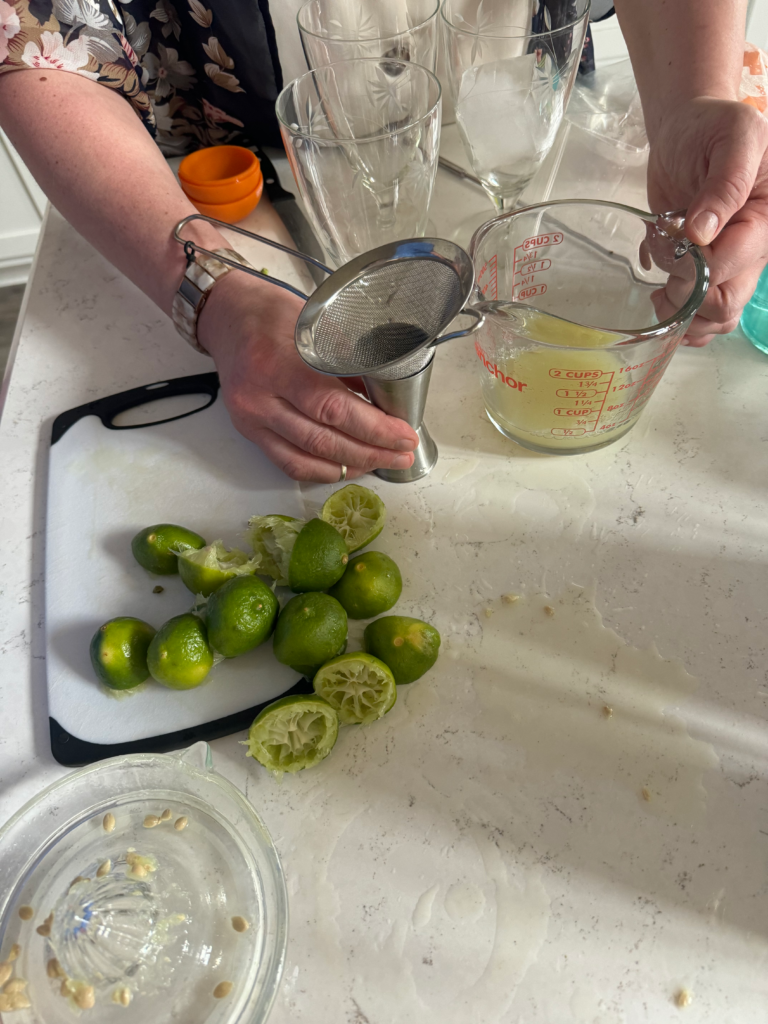
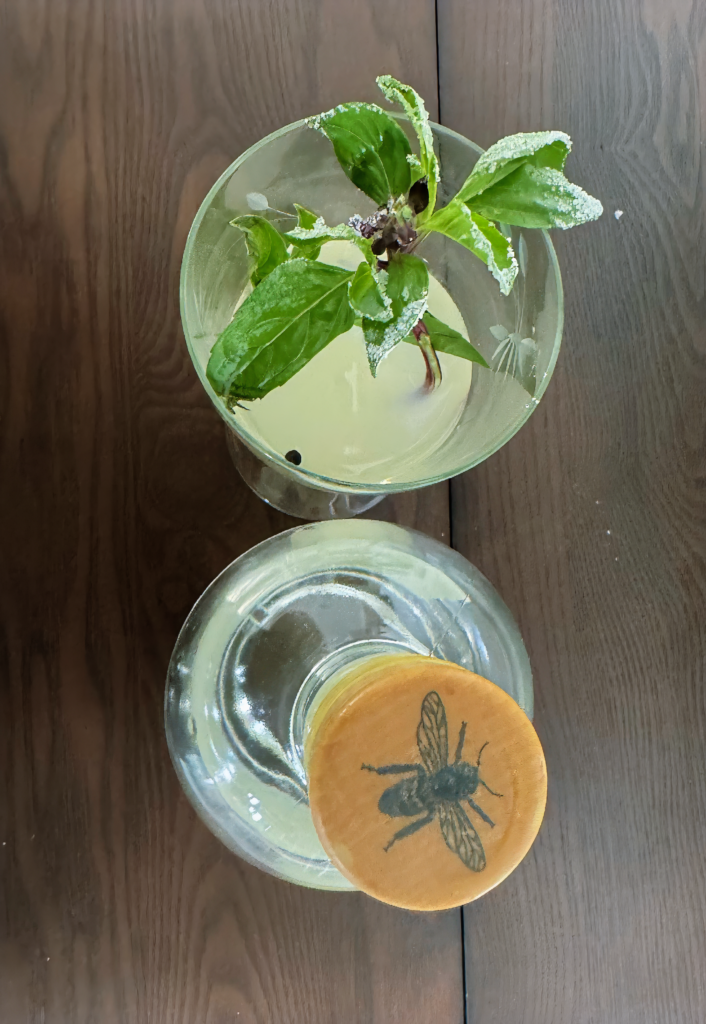
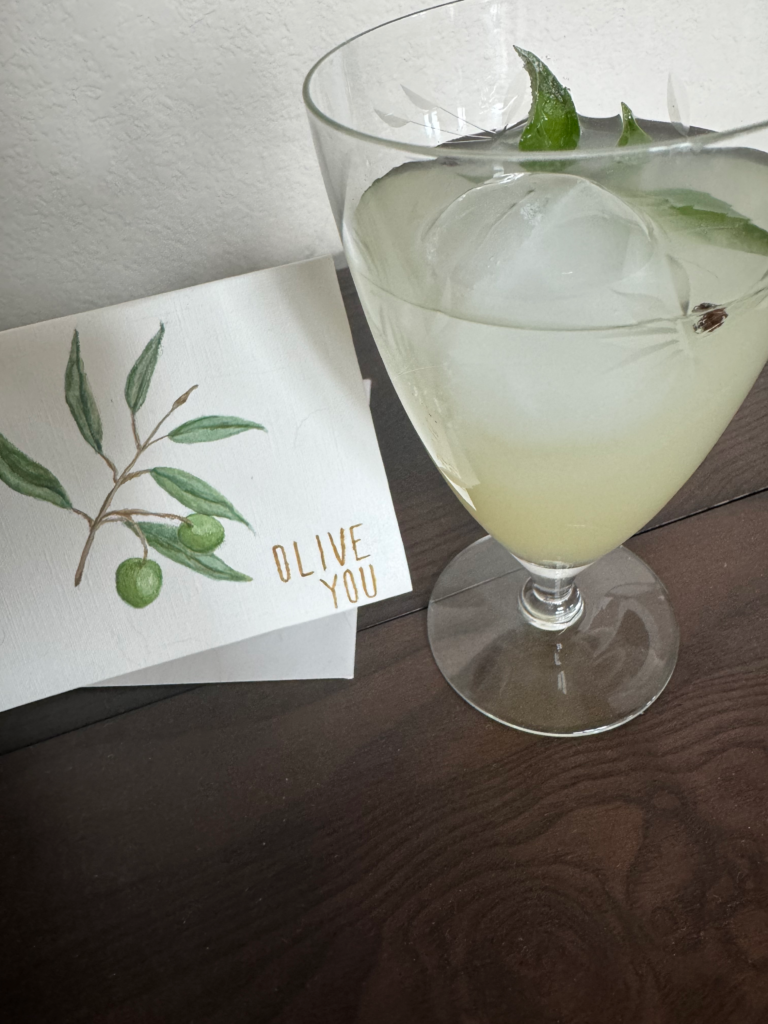
So do I grow Thai basil in my garden?
The answer is a resounding yes! I love this basil because it has performed over the three years I have given it a try without complaint. I first planted the Thai Sweet basil seeds from Baker Creek seed catalog. This gorgeous, shrubby herb will grow about 2.5 feet tall and at least that wide in the most neglected spot of the garden. This area isn’t neglected because it is far away but rather we ten to get tired by the time we finish other fiddlings of the day and say to each other, “We’ll get there tomorrow.” I feel sure you know that spot. Well our Thai basil has tended to be so happy with our hot humid summers and hasn’t asked for much in the way of water. Last year I think we did well with a weekly watering, the Thai basil producing abundant flowers which are called thyrse in form. They form long spikes opening from the bottom with inflorescences of purple and actual flowers of pink. Each day these plants were swarmed by bees, butterflies and checked out by the hummingbirds from time to time. I can’t wait to grow more this year. They are so easy to start from seed both indoors and out. They also are easily propagated from stem cuttings. I usually strew the seed heads around the garden where I’d like a new plant and they take off.
Thai basil is a member of the Lamiaceae family which is well known from mints. They have the square stems of other plants in this family. I did learn that Thai basil is distinct from Holy basil (tulsi) by the coloration on the stem. Thai basil has a purple stem and Holy basil has a green stem. Their flavor profiles are distinct too. Thai basil has a sweeter, less pungent flavor. I think I’ll give them both a try.
So, give this plant full sun, pick and pinch on a regular basis to keep it bushy, water it when dry but no wet feet, and if you are colder that a zone 10 perhaps treat it as an annual. I have it come back from seed every year.
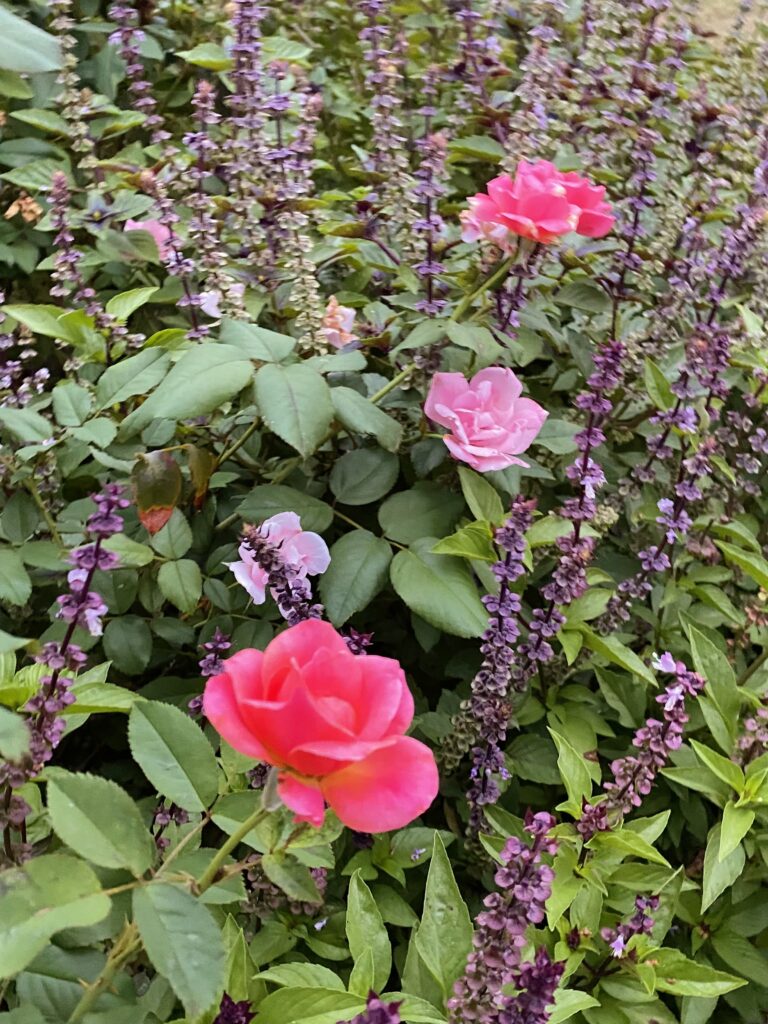
References
- Baker Creek Seeds: The Whole Seed Catalog 2023: pg. 50
- The Cleveland Clinic: health essentials: September 19, 2023, 5 Health Benefits of Basil. Online
- Wikipedia: Terpene: Online, Read April 2024
- Online: Sensing Terpenes: A Guide to Terpene Aromas and Flavors
- Home » Articles » Terpenes » Sensing Terpenes: A Guide to Terpene Aromas and Flavors



